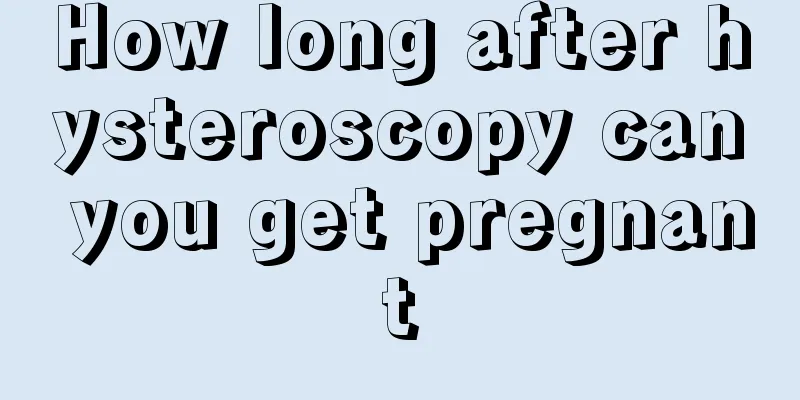What are the treatments for uterine infertility?

|
Everyone longs to have a child of their own. We also see many people suffering from infertility on TV. Infertility mainly targets women and infertility targets men. Maybe in the movie they adopt a child, but in real life, we want to have a child of our own through treatment. The following introduces the methods of treating uterine infertility. 1. Cervical atresia, stenosis and dysplasia of the cervix. The main treatment for uterine infertility is uterine dilation: it is performed after the menstruation is over or before ovulation. First, a sterilized probe is used to probe the uterine cavity, and then the cervical dilator is used to dilate from No. 3 to No. 7. Congenital cervical dysplasia can be treated simultaneously with artificial cycles or high-dose progesterone as pseudo-pregnancy therapy. 2. Abnormal cervical mucus. The cervical mucus secretion is too little and thick. Small doses of estrogen can be used to treat uterine infertility, which can improve follicle function, thin the cervical mucus, and facilitate the passage of sperm. There are also reports that the use of pulsed or intravenous luteinizing hormone-releasing hormone (LHRH) can also improve cervical mucus and achieve conception. 3. If sperm and cervical mucus are incompatible, cervical mucus exchange can be performed. That is, during the ovulation period, after disinfecting the vagina and cervix, the patient's cervical mucus is sucked out and the cervical mucus of a donor with good compatibility in the penetration cross test is injected into the patient's endocervical canal. It would be more ideal if the cervical mucus of a donor containing the husband's semen in the slide penetration cross test is injected. 4. Cervical fibroids: Surgery is the main measure to treat uterine infertility. Small fibroids can be treated with vaginal myomectomy or enucleation. Larger fibroids require abdominal resection. For infertile patients, the principle of surgery is to maintain the function of the cervix as much as possible and prevent adhesion or stenosis of the cervical canal. Cryotherapy can also be used. The cryotherapy head is in the shape of a pencil or needle and is inserted into the fibroid or at the base. Each freezing session is for 2-3 minutes, once a week, and not during menstruation. After 5-10 treatments, the fibroids will shrink or fall off from the base. There are many causes of uterine infertility, mainly endometritis, intrauterine adhesions, uterine hypoplasia, and infertility caused by uterine malformations. Women with these diseases must go to a regular hospital for examination and treatment in time, and choose a treatment method for uterine infertility that suits them under the guidance of a doctor, and be careful to avoid serious adverse consequences caused by improper treatment. In fact, there are still a few people suffering from infertility. Although one part of the reason is congenital and the other part is acquired, as long as we find the real cause, we can definitely treat this disease. I believe that female friends will definitely pay attention to this disease and hope that everyone can have a child of their own. |
<<: What are the methods of treating uterine infertility?
>>: How to perform breast ptosis exercise?
Recommend
How many months can you take Diane 35 to regulate menstruation?
Key reminder: Menstrual irregularities are a comm...
Peach gum = cheap bird's nest? Is it really that magical?
In the spring, peach blossoms bloomed quietly, pe...
Can aloe vera cure breast hyperplasia?
In the past decade or so, the incidence of breast...
How does belly fat form? How can you lose it?
This article was reviewed by Tao Ning, PhD, Assoc...
How to increase the number of basal follicles
The number of basal follicles in a woman's bo...
Is a cyst found during a gynecological examination serious?
Uterine cyst is not a professional term related t...
What happens if the bleeding stops after sex?
When a woman has vaginal bleeding during intercou...
How big is the breast fibroid that requires surgery?
Normally, if the breast fibroid is smaller than 3...
Unlock the secrets of cervical spine protection and self-help for "head-down tribe"
Author: Fan Hailong, deputy chief physician of Ho...
How to treat vaginal itching caused by increased leucorrhea
Women should pay more attention to the observatio...
Chest pain after abortion
In fact, abortion causes great harm to the body. ...
Introduction to the treatment of endometrial hyperplasia by curettage and dilation
Endometrial hyperplasia is a problem that many wo...
Can moxibustion device treat gynecological inflammation?
Moxibustion is an important example of traditiona...
What medicine is effective for uterine fibroids?
For people with uterine fibroids, they still need...









